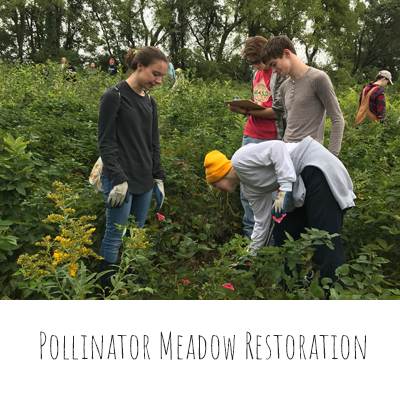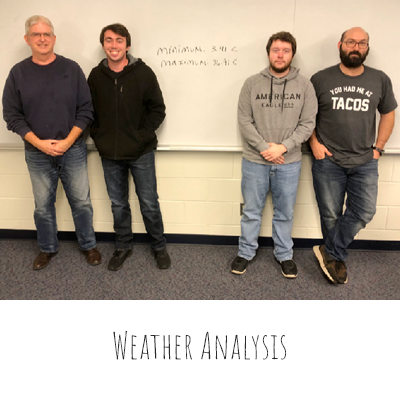STEM Research
Environmental Science

Covered Bridge Trail Forest Restoration
This 4.9 acre forest restoration project is a collaborative effort among Bucks County Community College, the Pennsylvania Department of Conservation and Natural Resources (PaDCNR) at Tyler State Park, the Pennsylvania Horticultural Society’s TreeVitalize Watershed program (funded by the Pennsylvania Department of Environmental Protection (PaDEP) and implemented by the Bucks County Conservation District), and the Neshaminy Creek Watershed Association (NCWA). In addition, grant money was obtained from the Bucks County Community College Foundation and the STEM Department operating budget.
The project provides ongoing care and monitoring for a minimum of 10 years post-planting, which occurred in fall 2019. The work has and will continue to be done as part of the Service Learning curriculum in the Bucks County Community College course, Introduction to Environmental Science (SCIE105).
Restorative goals for this project include restoring the canopy, increasing water absorption, mechanically removing invasive plants and establishing a community of large, long-lived, diverse native trees, shrubs and perennials with high wildlife value. The total number of native plantings were 249 trees, 40 shrubs and 80 perennials.
Biology & Environmental Science

Monarch & All Pollinator Meadow Restoration
This project is a collaborative effort between Bucks County Community College and Pennsylvania Department of Conservation and Natural Resources (PaDCNR) at Tyler State Park. Funding has been provided through a grant from PECO, a Bucks County Community College Strategic Initiative grant and funding from the STEM Department operating budget.
Students taking Introduction to Environmental Science (SCIE105) and Biological Principles II (BIOL122) are directly involved in this long term research project. The project involves two different management schemes that are being compared over the long term for native wildflower colonization and abundance of pollinator activity. Two smaller meadows (about 1.5 acres in total) are being restored using a mostly passive method, while the large 10 acre site is being restored with an active method.
Students are involved in establishing transect lines and sampling plots, native seed planting, plant identification, pollinator activity, and Monarch butterfly caterpillar monitoring.
Computer Science

Weather Analysis
All students in a section of CISC-122, Computer Science II, were tasked with reading a data file of timestamp (in Universal Time Coordinated or UTC) and temperature (in Celsius) pairs; consisting of about twenty-three thousand pairs. The goal was to identify the minimum and maximum temperatures, over an almost three month period; from July 19, 2019 at 7:30 PM UTC to October 7, 2019 at 4:10 PM UTC. According to the numbers in the figure at the left, the low was identified as 3.41 Celsius; and, the high was identified as 36.91 Celsius. These readings were made at 9:40 AM UTC, on October 5, 2019 and July 21, 2019 at 9:00 PM UTC, respectively. These times are off from Eastern Daylight Time (EDT), plus five hours. So the low occurred just before sunrise; and the high occurred in the late afternoon; this is to be expected. Research@Bucks has been collecting both abiotic and select biotic data in Tyler State Park for almost three years. Our remote weather station ALDO, tracks several abiotic (weather-related) metrics in five minute increments.